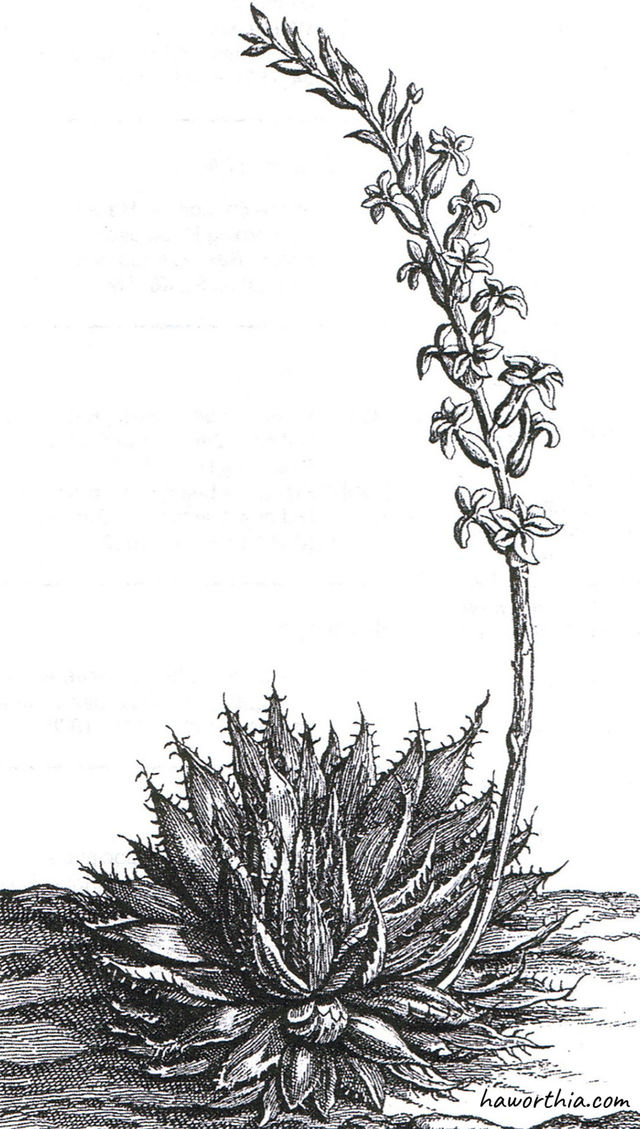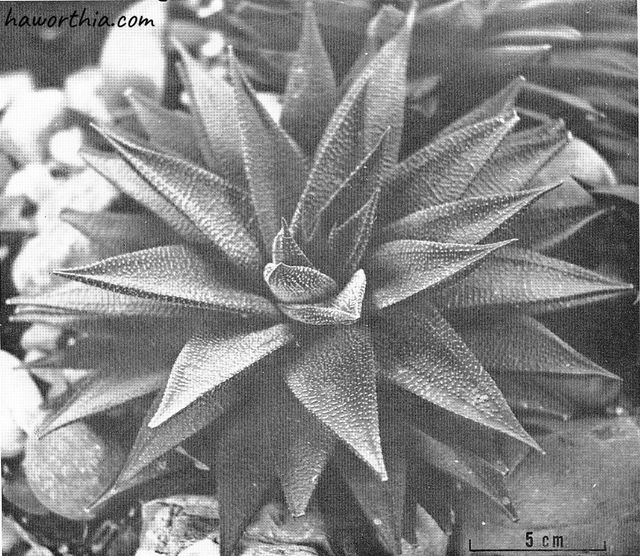History
When European settled in southern Africa in the latter half of the 17th century, the Age of Enlightenment has already spread its wings, exciting and challenging the intellect, refuting the tenets of ignorance and superstition. More widespread education and the availability of printed books had taken learning out of the monasteries, while the natural curiosity of man had been aroused by tales of brave new worlds beyond the sea – worlds with, among other things, wondrous people, animals, and plant life.
The 17-18th Centuries

1695. The first reference to Haworthia occurs in letters sent to Holland by Hendrick Bernard Oldenland, who was superintendent of the gardens of the Dutch East India company. He listed 28 “Aloes”, and some of these plants are now considered to be Haworthias. His descriptions later appeared in print in 1703 in Commelin’s Praeludia Botanica.
1701. The first published references concerning Haworthias appeared in Jan Commelin’s Horti Medici Amstrelodamensis Rariorum Plantarum. The illustrations were made in Amsterdam from plants growing in the Hortus Medicus.
1753. The Species Plantarum of Carl Linnaeus is taken as the starting point of our modern binomial nomenclature for flowering plants. Some Haworthias are included in Linnaeus’s sense of Aloe.
The 19th Century
1804. Adrian Haworth grouped Haworthias in his section Parviflorae, indicating that he recognized a difference between them and the typical Aloes.
1809. Henri Duval separated the genera Haworthia and Gasteria from Aloe to be new species. These names were accepted by Haworth in 1812.
1880. John Baker recognized Haworthia as a separate genus, since Haworth’s death. Before that, there had been a tendency to revert the genus back to the Linnaean sense of Aloe.
The 20th Century
1908. Alwin Berger published the first monograph on the subfamily Asphodeloideae, which includes Haworthia.
1928-45. Karl von Poellnitz described over 200 new species and varieties, doubling the number of species.
1938-51. A.J.A. Uitewaal observed a natural division of the genus based on floral characteristics and established 4 sections: Triangulares, Hexangulares, Robustipedunculatae, and Gracilipedunculatae.

1976. Bruce Bayer divided the genus into 3 subgenera: Haworthia, Hexangulares, and Robustipedunculatae, deriving partly from the concept of Uitewaal.
The 21th Century
2013-2014. Gordon Rowley and John Manning et al., based on phylogenetic studies, divided the genus into 3 genera: Haworthia, Haworthiopsis, and Tulista.
